
Goes through the steps involved in adding and subtracting fractions with different denominators and provides examples.
- Subject:
- Mathematics
- Material Type:
- Reading
- Date Added:
- 05/03/2022
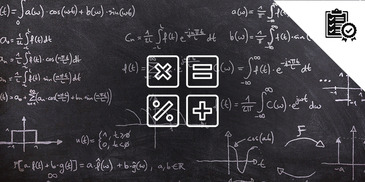

Goes through the steps involved in adding and subtracting fractions with different denominators and provides examples.

Features steps on how to add and subtract fractions with the same denominator.

Overview of the four basic number properties with examples.

Follow the examples showing the general steps on how to divide fractions.

The distributive property of multiplication over addition allows us to eliminate the grouping symbol, usually in the form of parenthesis. Illustrates the basic pattern or formula and how to apply it.

Overview of how to write algebraic expressions with step-by-step examples.

In this task students use different representations to analyze the relationship between two quantities and to solve a real world problem. The situation presented provides a good opportunity to make connections between the information provided by tables, graphs and equations.
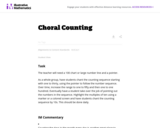
This task suggests methods of introducing and continuing choral counting in the classroom.
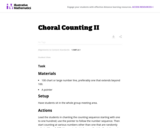
Teachers (and then students) lead the class in chanting numbers from 1 to 120.

Students construct chords, secants, and tangents. From those constructions, they develop a deeper understanding of the terms, as well as explore certain properties of the constructions.

This task is primarily about volume and surface area, although it also gives students an early look at converting between measurements in scale models and the real objects they correspond to.
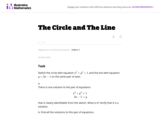
Although this task is fairly straightforward, it is worth noticing that it does not explicitly tell students to look for intersection points when they graph the circle and the line. Thus, in addition to assessing whether they can solve the system of equations, it is assessing a simple but important piece of conceptual understanding, namely the correspondence between intersection points of the two graphs and solutions of the system.
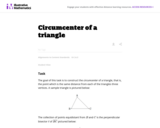
This task shows that the three perpendicular bisectors of the sides of a triangle all meet in a point, using the characterization of the perpendicular bisector of a line segment as the set of points equidistant from the two ends of the segment. The point so constructed is called the circumcenter of the triangle.

Shows the a graph of the Cissoid of Diocles and the formula in rectangula and polar coordinates. Also includes a history of the cissoid.

A number of different ways to approach complex numbers and operations with them.

Contains detailed information on absolute values for complex numbers.

This Clark University page is an excellent reference page for trig identities. It is a little difficult to read so take your time with the formulas. If you remember soh - cah - toa, the other formulas are right here.

This short video and interactive assessment activity is designed to teach third graders about classifying all types of triangles by lengths of sides.

This short video and interactive assessment activity is designed to teach fourth graders about classifying all types of triangles by lengths of sides.

This short video and interactive assessment activity is designed to teach third graders an overview of triangle classifications.